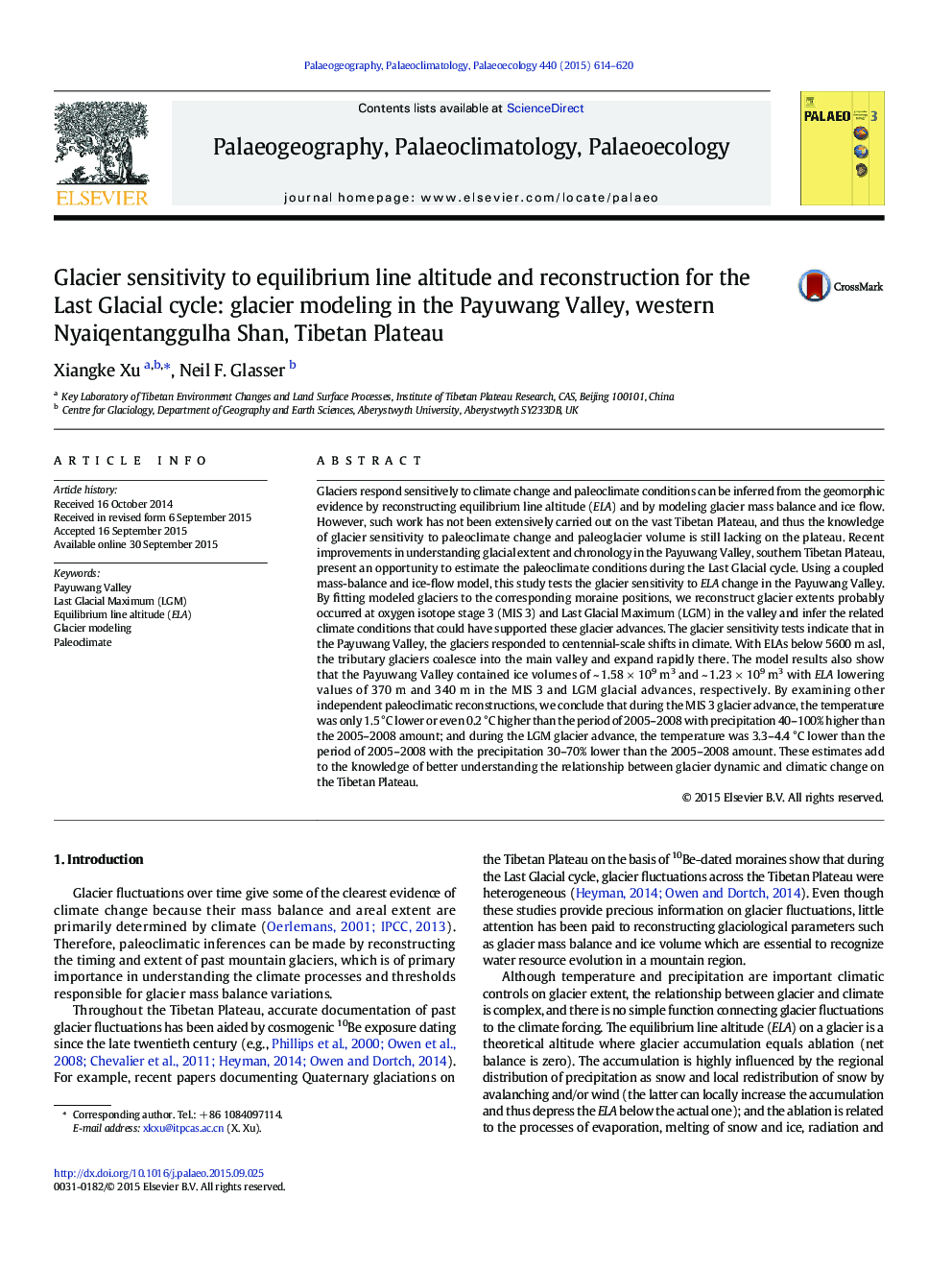| Article ID | Journal | Published Year | Pages | File Type |
|---|---|---|---|---|
| 6349561 | Palaeogeography, Palaeoclimatology, Palaeoecology | 2015 | 7 Pages |
Abstract
Glaciers respond sensitively to climate change and paleoclimate conditions can be inferred from the geomorphic evidence by reconstructing equilibrium line altitude (ELA) and by modeling glacier mass balance and ice flow. However, such work has not been extensively carried out on the vast Tibetan Plateau, and thus the knowledge of glacier sensitivity to paleoclimate change and paleoglacier volume is still lacking on the plateau. Recent improvements in understanding glacial extent and chronology in the Payuwang Valley, southern Tibetan Plateau, present an opportunity to estimate the paleoclimate conditions during the Last Glacial cycle. Using a coupled mass-balance and ice-flow model, this study tests the glacier sensitivity to ELA change in the Payuwang Valley. By fitting modeled glaciers to the corresponding moraine positions, we reconstruct glacier extents probably occurred at oxygen isotope stage 3 (MIS 3) and Last Glacial Maximum (LGM) in the valley and infer the related climate conditions that could have supported these glacier advances. The glacier sensitivity tests indicate that in the Payuwang Valley, the glaciers responded to centennial-scale shifts in climate. With ELAs below 5600 m asl, the tributary glaciers coalesce into the main valley and expand rapidly there. The model results also show that the Payuwang Valley contained ice volumes of ~ 1.58 Ã 109 m3 and ~ 1.23 Ã 109 m3 with ELA lowering values of 370 m and 340 m in the MIS 3 and LGM glacial advances, respectively. By examining other independent paleoclimatic reconstructions, we conclude that during the MIS 3 glacier advance, the temperature was only 1.5 °C lower or even 0.2 °C higher than the period of 2005-2008 with precipitation 40-100% higher than the 2005-2008 amount; and during the LGM glacier advance, the temperature was 3.3-4.4 °C lower than the period of 2005-2008 with the precipitation 30-70% lower than the 2005-2008 amount. These estimates add to the knowledge of better understanding the relationship between glacier dynamic and climatic change on the Tibetan Plateau.
Related Topics
Physical Sciences and Engineering
Earth and Planetary Sciences
Earth-Surface Processes
Authors
Xiangke Xu, Neil F. Glasser,
